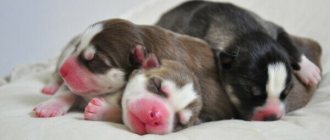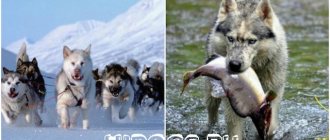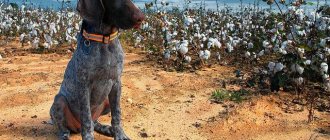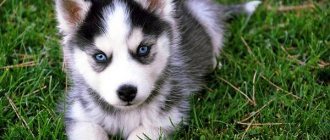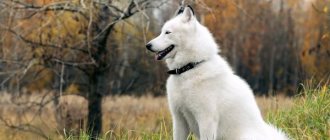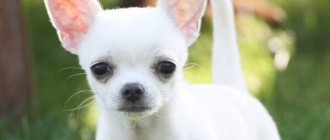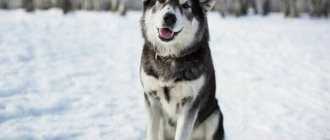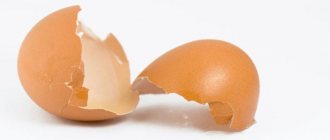Your Siberian Husky puppy has floppy ears because he or she is just a puppy. His or her ear cartilage and bones are not fully developed. Puppy ears are also in the process of growing. You probably just adopted a puppy and are wondering how long it takes for a Siberian Husky's ears to stand up. If your Siberian puppy is less than six weeks old, he most likely has floppy ears. However, each puppy grows at its own pace, and some Siberian Husky puppies may take a little longer. Don't worry, your Husky puppy will develop ears and have erect ears.
When a Husky's ears stand up also depends on his pedigree, physical growth and even diet. If you've adopted a husky puppy, there's a good chance you don't know who the parents are or what the pedigree of your newly adopted puppy is. He or she might as well be a Husky and you will see how he or she will develop. If you are concerned, take your puppy to the vet. At this age, you still send your puppy for veterinary examinations. Your veterinarian will tell you how your puppy is doing and answer any questions you may have. Either way, by the time your puppy is done teething, you will see if his ears stand up.
Husky puppies ears droop
Steegle.com - Google Sites Tweet Button
Today we will talk about how to care for and clean the ears of a Siberian Husky.
We will also consider the rules of care and treatment of ear diseases in huskies. You can use special ear drops for prevention, which are designed to kill ear mites, when you treat your dog against fleas. There is no need to constantly use them to clean your ears.
If a husky’s ear becomes inflamed, becomes red inside, “squelches”, bothers the dog and she scratches it all the time, then the dog must be taken to the veterinarian. Treatment for most ear infections goes beyond cleaning the ear. Otitis is much easier to treat if treatment begins in the first days of the disease. Chronic otitis media is difficult and time-consuming to treat.
If signs of the disease were not noticed prematurely and it has time to develop, the husky will shake its head and rub its head on furniture. An infection that is not treated at an early stage is painful. When dogs have mites in their ears, only a veterinarian can cure them.
According to the breed standard, Husky ears must stand up, so it is not recommended to stroke the puppy on the head, so as not to spoil the shape of the ears. In puppies, the ear cartilage is soft, it becomes strong at about five to six months, i.e. by the end of the period of tooth change. By this age, the ears should stand up.
The cartilage may remain soft if the dog is lacking in minerals. In general, we can say that ears are one of the weak points of show huskies. Experts at exhibitions usually pay attention to all their shortcomings. Therefore, it is better to consult with specialists in this breed, who will tell you how to properly care for your husky’s ears.
The ears of dogs, including huskies, are one of the areas most open to various infections. How to protect your pet? Here are simple three-step instructions: 1. Prepare a cleaning solution. Let the husky lie on its side. Place the solution in each ear. 2. For the solution to begin to soften earwax and dirt, gently massage the outer part of the ears for 1-2 minutes. 3. Soak a cotton swab in the solution and remove wax and dirt near the ear canal. Then move on to cleaning the outside of the ear. To help your dog learn not to be afraid of ear cleaning, praise him every time you finish.
Some useful tips for caring for Husky ears
Pay attention to whether there is swelling, redness, crusting, discharge, or a foul odor in the dog’s ears. If any of the above are found, and your husky shakes its head from time to time, there is most likely something wrong with your pet’s health. Do not self-medicate - make an appointment with a veterinarian. Cotton swab applicators are not suitable for cleaning the ears of an adult husky. To avoid pushing ear dirt, use the corner of a damp terry cloth.
In the ear canal of a husky there are small hairs - villi, which with their movements move earwax to the exit and push it out. Therefore, constant and very frequent pouring of various solutions into the ears and constant picking at them with cotton swabs leads to a violation of the integrity of these villi, and wax removal can no longer occur spontaneously. Wax accumulates in the ear canal and causes the formation of a wax plug. All this leads to otitis (inflammation of the ears). If you have a long-haired Husky, long hairs may grow in his outer ear canal, which from time to time die off, form into clumps and block the ear canal. Therefore, they also need to be removed from time to time using the index finger and thumb of the right hand using pinch movements. If the hair is dead, then with such movements it is very easily removed.
So how do you properly care for your husky’s ears?
1. If the ears are warm, pink, clean inside. Don't touch them at all.
2. You need to clean your ears if you see wax (a thick brown substance). Take a dry cotton swab and remove the wax using upward movements.
3. You need to examine your ears every day. In summer, inspection should occur 2 times a day. Let’s not forget about forest ticks, which live even within the city limits, and about the water in which our pets splash in the summer.
4. If your husky shakes its head, especially after a night's sleep, you need to drop an ear cleaning lotion specially purchased for this procedure into its ear canal and do a light massage at the base of the ear. Then, with the index finger wrapped in clean cotton wool, we wipe the inside of the ear from the wax that has risen from the inside. Remember that the villi themselves will raise the wax upward; your task is to remove excess wax from the ear itself.
5. If the husky scratches its ears or the dog's head is tilted to the side. If the dog squeals every time you touch the ear, then a veterinarian should treat the dog.
6. If you see a forest tick inside your ear and you are unable to contact a doctor. Then it is necessary to remove the tick from the ear canal. Just don't pour vegetable oil into your ear. You need to get tweezers. Use tweezers to grab the tick as close to the skin as possible and use a rotating motion to unscrew it from the skin. Then the place where the tick is attached must be lubricated with any disinfectant solution.
Upbringing
It is the most important condition for a good dog. It is the competent upbringing of the puppy that will determine in the future whether the dog will bring you only joy or vice versa.
How to educate correctly?
There is no single instruction on how to properly raise puppies. Everyone needs their own approach. It all depends on the character of the dog itself, and not on whether the desired object of education is a girl or a boy.
When to start?
The sooner you start training, the better for you and easier for the puppy. Conscious and more difficult commands or behaviors should begin to be taught after the pet learns its name.
What to teach before 3 months?
Within three months of birth, you can learn basic behavior with a husky puppy:
- do not rush at the owner;
- sleep at night and not wake up;
- wait patiently for food;
- run down the street at the feet of the owner;
- start training the basic commands: “Ugh!”, “Come to me!”, “Sit!”.
What should a 4-month-old pet be able to do?
Must be trained in all of the above manners and unquestioningly follow the commands: “Come to me!”, “Sit!”, “You can!”.
How to stop a husky from littering the house?
Since it is not permissible to let puppies go outside until they are four months old, and you don’t want to put up with puddles, it is necessary to train them to a litter box. You need to understand that the puppy physically cannot endure it. Scolding and punishing a dog will achieve nothing, because all its actions occur at the level of reflexes.
REFERENCE. To calculate the frequency of puppy relief to the age (in months), add 1, the result in hours.
How to toilet train?
Where the pet relieves itself, we put a newspaper in that place. After wetting it, we put it in a tray and put it in the place where the puppy did these things most often. We use absorbent diapers to place them in other popular places, and from week to week we reduce the number of diapers.
On the street
It is worth accustoming after 6 months. Take him out for walks an hour after eating and wait until the dog finishes all his work. It may not work the first time, and the puppy will endure it all the way home. Next time you should take soaked newspaper with you and increase the duration of your walk.
How to stop biting?
It is important to understand that biting the owner or family members on the legs in puppies under 4 months of age is normal behavior and will go away on its own over time. But you shouldn’t encourage him in this either. It is necessary to point out from an early age that he is not the leader here. If an animal shows aggression, demonstrate force, but under no circumstances hit. It is enough to pull the collar so that his muzzle is as close to the floor as possible, and hold in this position for several seconds. Then defiantly ignore the puppy for a few more minutes. Such procedures should be carried out regularly if circumstances so require.
Why does a puppy howl and how to wean it off?
For a husky, howling is a means of communication with the outside world, a way to convey emotions. He can howl both from grief and joy, or simply to attract attention. It is impossible to completely wean off this habit. You can only understand the reasons and reduce the frequency of these incidents.
We teach the kitten to talk
Not every individual can imitate human sounds. But such simple words as “mom”, “yum-yum” can be used by almost any pet. It is necessary to sing the sound, so the dog recognizes speech better, and train it with treats.
How to punish?
Punishment is a lack of praise. It is unacceptable to use physical force; it can have a detrimental effect on the puppy’s psyche. Not strong, but strict pats on the pelvis or clicks on the nose - this will be enough for an adequate dog to realize guilt. Stern voice and ignoring for the period of punishment.
At what age can you wear a harness?
There is no age limit for the harness. There are restrictions on the type of harness. For a husky puppy, only a walking harness is used.
Leash training
If you teach it from infancy, there shouldn’t be any serious problems. This breed has harnessing in its blood, so it takes a leash for granted. If the puppy rushes forward and pulls the leash, you should pull it back with one sharp movement and stop, and then continue moving.
Breed Features
Huskies are luxurious and well-built animals.
They are distinguished by special restraint and self-esteem. But this does not mean at all that dogs do not like to frolic and play with their brothers. By the way, they will not leave their owners unattended, even on walks. After all, huskies are very attached to “their” people. This is how it happened historically. In ancient times, animals warmed people and their small children with their warmth on cold evenings and nights. Therefore, huskies are excellent, caring nannies and will be able to find contact with any child. But a dog of this color is unlikely to be suitable for hunting. Of course, the hunting instinct of these pets is enviable. But, having caught game, do not expect the dog to bring it to you. Most likely, she will dine on the prey herself.
As for external characteristics, huskies are medium-sized dogs, with thick hair and dense undercoat. A distinctive feature of this suit is a special mask on the face and a non-standard eye color, most often bright blue or brown. But the most popular lucky dogs are considered to be harlequins (dogs with multi-colored eyes).
In addition, animals have a tail curled into a ring in the active state, which can be lowered in rest mode. As for the ears, they are completely erect. Creases and bends are considered defects or deviations associated with a lack of nutrients in the body.
Husky paw care
Huskies are active animals that can “pick up” a lot of things on their paws in one walk. We strongly recommend washing them after each visit to the street. If you live in a private home and your dog spends time in the yard, wash its paws as they become dirty.
If your dog's paws are not too dirty (which happens after short walks), it is recommended to use regular cool water. Soap should be used in “severe” cases. Dog shampoo diluted in water in a ratio of 1 to 5 is excellent for washing paws. It is worth cleaning not only the pads, but also the space between them. After bathing, paws should be dried with a regular towel.
In the context of paw care, caring for a Husky in an apartment is more complex than in a country house. The fact is that a large amount of substances that harm the pads accumulate on city roads. This includes salt, settled exhaust, and dirt with impurities, which is carried by thousands of people. To protect your dog's paws, you can apply a wax ointment or paste to the skin. They can be purchased at pet stores. The product must be applied before walking. It creates a film that protects paws from irritation and the negative influence of temperatures. In addition, many ointments and pastes have a healing effect. After a walk, the product should be washed off.
You can also use dog boots to protect your paws. They protect not only from the above factors, but also from mechanical damage.
It is recommended to apply softening dog cosmetics to the skin of the paws every 3-4 days. It will protect against discomfort and irritation. Human means cannot be used. Firstly, they are not suitable in composition. Secondly, the dog will certainly lick off the harmful “chemicals”, which will attract it with its aroma. If it is not possible to get specialized products, you can use a small amount of vegetable oil. More difficult to obtain is goose fat.
During its races and games, your pet can damage its paw. Treat the resulting crack with a dog emollient antiseptic until complete healing. Apply the product 2-3 times daily. If the crack does not heal for more than a week, take your husky to the vet. The same must be done when stains appear.
In case of a shallow cut, you need to wash the wound and treat it with hydrogen peroxide. Over the next four to five days, it is necessary to treat the wound with an antiseptic: for example, a solution of furasol. If the injury is serious, of course, it is better to go to the vet after stopping the bleeding. If this is not possible, do the following: remove foreign objects from the wound, if there are any, treat with hydrogen peroxide, apply a liquid plaster. In the future, use an antiseptic. The dog may chew on the wound. In this case, you need to bandage it. Dog boots can be used to protect the wound while walking.
If your dog is licking a wound, do not stop it from doing so. Saliva contains a powerful antiseptic that promotes speedy healing. The exception is if you have just applied medicine to a wound.
Trim your nails regularly. This is especially true for huskies, who spend little time outside, and their claws do not wear off on the asphalt. As soon as they start to curl, trim them. To do this, you should purchase a dog nail clipper. Don’t skimp on this device: the better quality it is, the less discomfort the trimming procedure will bring to your pet. Remember one more rule: more often is better, but safer. Trim just a few millimeters, otherwise there is a risk of touching the vessel.
At what age do husky ears stand up?
According to the breed standard, a Husky puppy's ears should be erect. But not all representatives can boast of such an achievement at an early age. After all, puppies of any breed are born with drooping ears, which rise as they grow and mature.
Many dogs of small decorative breeds have their ears glued in order to quickly achieve the desired result. But, if husky puppies have drooping ears , then do not rush to resort to this method. Most likely, the baby is still too small and his body is not strong enough. After all, for such a seemingly simple process, a large supply of calcium is required, which, by the way, is recommended to be replenished with the help of vitamins during the period of active growth.
Huskies are a strong breed. And, therefore, as a rule, such husky babies’ ears stand up quite early. The development process is quick and by the time of purchase, the puppy already has clearly defined, erect ears.
Caring for a Husky after birth
Dark red discharge from the loop for two to three weeks after birth is normal. If the shade is different, or an unpleasant odor appears, you should consult a doctor as soon as possible. These are signs of inflammation of the uterus.
While the husky is feeding the puppies, do not use dog cosmetics or chemical protective agents. They can poison puppies. Full bathing for a new mother can be done five to seven weeks after giving birth.
Inspect the nipples of a nursing husky. If they are damaged, trim the baby's claws on the front paws.
In the case of a small number of offspring, the mother’s mammary glands may become denser. In this case, firstly, you need to massage these glands. Secondly, direct the puppies to those nipples near which there is a lump.
In the first three days, the mother's diet should consist only of dairy products. In the period from 3 to 5 days, you can give boiled meat and broth. After the fifth day, it is allowed to feed the husky raw meat. A week after giving birth, you can feed your dog puppy food and her regular diet. As a supplement, mineral supplements are used that are beneficial for the skeleton of puppies. If babies develop diarrhea after a certain food, remove it from the diet. You need to monitor not only the mother, but also the offspring.
How many months does a husky puppy's ears stand up?
What time do husky ears stand up ? A question that interests many novice dog breeders. The formation of ears is an individual process. Some owners can boast of this result already at one and a half months of age, and some huskies do not have ears even at six months. There's no need to panic. It is important to monitor the quality of food and add vitamin supplements to the diet to provide your pet’s body with everything it needs. After all, sometimes the main problem why husky puppies have drooping ears lies precisely in the lack of calcium and other useful “building” substances.
Also, it is important to note that during the period of teeth change, that is, at about six months, a new problem may appear - the husky puppy’s ears have fallen off. But there is no need to run to the veterinarian for an examination. Again, vitamin complexes and time will help you and your pet. As soon as the change of teeth is completed, the ears will take their usual position.
Final thoughts
Your Siberian Husky puppy's ears will stand up over time. When the ears and cartilage are hard, the ears stand on end.
Siberian Huskies grow so fast! Remember to enjoy every moment and don't worry about everything so much. Take your Siberian puppy to the vet to get his shots. Vaccinations are important for your puppy's health. The first vaccination is given when your Siberian Husky puppy is six to eight weeks old. All puppies, even Siberian Husky puppies, should be vaccinated against parvovirus, rabies, distemper and hepatitis. If you've just adopted a puppy or an adult dog, it's best to take him to the vet for a checkup.
Radical methods
If at two, three, or even eight months your pet cannot boast of straight ears, then there is a significant problem. Only an experienced veterinarian can identify it. As a rule, it lies in the pet not being purebred or in poor quality nutrition or lack of vitamins. The last reason can be solved quite simply and quickly by adjusting your diet and taking vitamins.
If the reason is that the dog is not purebred, you can accept the pet as it is, or try to add ears. There are several methods:
- glue it yourself, using cotton swabs and patches;
- contact a veterinary clinic for gluing;
- surgical intervention. By the way, this is the most extreme and emergency way out of the situation. Think carefully before putting your pet under the knife whether erect ears are worth the stress the animal will experience.
The puppy has no ears: what to do?
Puppies of such breeds as German Shepherd, Husky, Husky, Yorkie, etc. often have a problem when their ears cannot stand up for a long time or stand up and then fall back. Accordingly, the owners of such dogs are concerned with the following questions: “When does a puppy’s ears stand up?”, “Why don’t a puppy’s ears stand up?” and “How to put on a puppy’s ears?” We will try to answer these questions today.
First of all, we want to clarify when puppies’ ears stand up. The fact is that different breeds of dogs have ears that stand up at different times. For example, huskies and huskies have ears at 1.5 months, German Shepherd puppies at 3-4 months, Yorkshire terriers at 3.5 months. However, many factors can cause your puppy's ears to stand up much later.
Why don't my puppy's ears stand up?
- It could be that the pet is not purebred: you were sold a puppy cheaply, on the market, without documents.
- The second reason is weakened immunity after illness (because of this there is a lack of minerals, in particular calcium).
- The third reason is the period of teeth change (German Shepherds’ ears may “fall over” during this period, even if they were standing).
- Another reason may be the large size of the puppy, which has thick and fleshy ears (in this case, the ears of huskies hang on the tips for up to 5-6 months).
So, if you notice that your purebred German or Yorkie's ears don't stand up for a long time, you need to take action.
How to put on a puppy's ears?
- First: the puppy's diet. Foods must contain sufficient amounts of calcium. Give the puppy cottage cheese and milk. And boiled pig ears or jellied meat will make up for your pet’s lack of gelatin.
- Secondly, it is good to give the puppy vitamin and mineral complexes, as well as calcium and gelatin. But what mineral complex to give, it is better to consult a veterinarian.
- Thirdly, massage helps. To do this, you need to place your puppy’s ears with your hands five times a day and massage the ear cartilages.
- Fourthly, long walks and sufficient exercise are required for the puppy.
Ear bandage
And finally, if all your efforts are unsuccessful, you can glue the puppy’s ears.
- To do this, you need to treat the ears with alcohol, cut off the hair in the ears, carefully roll each ear into a tube vertically (for Yorkies) and glue each ear with a plaster. Special ear stickers or inserts are sold for German Shepherds.
- Next, you need to connect the ears to each other using a bandage or plaster.
- Remove the bandage after 2 weeks to allow the skin to rest. After two days, the bandage must be reinstalled. And this procedure is repeated several times.
Among other things, if you are concerned about why the puppy’s ears are not erect, be sure to consult with a veterinarian and the owner of the kennel where the puppy was taken from.
Why don't my ears stand up?
It should be noted that this process begins at different age periods in different dog breeds. For example, in young huskies and huskies this occurs between one and a half months and two months, in Yorkshire terriers - after three, in a German shepherd - at three to four months, but it can be at two or five. That is, there are average periods for each breed. But deviations from them in one direction or the other are possible for a month or a month and a half. This is completely normal and should not cause concern to the pet owner. Many factors influence the shift in ear rise towards lateness. Here they are:
- Pet's uncleanliness. This often happens when, trying to buy a purebred dog cheaper, you purchase it without documents on the market. The dog’s impure blood will manifest itself over time not only as problems with the ears.
- Weakened immunity after illness.
- Period of teeth change. Most often, at this time, the ears of German shepherds, which previously stood well, “fall over”.
- The puppy is too large. Dogs have different offspring in a litter. And sometimes the biggest dog with fleshy ears has a similar problem.
- Fear, stress. If you bought a purebred puppy from a breeder and brought it home, then the period of its adaptation to the new place of residence may be manifested by falling ears. The stress that a dog experiences in a new environment, among unfamiliar smells, makes him, without maternal warmth, feel constrained, constrained, and wary, which leads to a similar problem.
When a husky puppy's ears stand up: age and description
- September 23, 2018
- Dogs and hunting with them
- Elena Motrenko
To raise a good hunting dog, it is very important to choose the right puppy. Hunters often opt for the husky. It must be taken into account that the puppy should only come from the best representatives of the Laika breed. This guarantees that the hunter will have the opportunity to get more meat and furs.
One of the signs of a purebred husky is its small, erect, pointed ears. Many dog owners have a question about when a husky puppy's ears stand up. Let's figure it out further.
Story
Laika is one of the oldest dog breeds. Initially, it was bred by residents of the North, including the Tungus. By crossing with other dogs, representatives of the breed deprived their offspring of the valuable qualities inherent in the husky. To preserve the purity of the breed, northern hunters shot all alien dogs without regret.
Intensive breeding of huskies began in the nineteenth century. Then the husky was called the northern pointy-eared dog. At this time, breed standards were clearly described, and the behavioral characteristics of these dogs during hunting were studied. In 1928, for the first time in Russia, an exhibition was organized where various varieties of huskies were presented.
During the war, huskies were used for transporting goods, as well as for blowing up objects and searching for mines, which reduced the number of representatives of this breed. In order to rectify the situation at the end of the war, dog kennels were created, in particular those that exclusively housed huskies. Intensive breeding of these dogs has provoked the need to establish new breed standards.
Today we have many types of husky breeds. They all differ from other dogs in a common set of character traits.
Laika: hunting characteristics
Laika is one of the best hunting dogs. Representatives of this breed took all the best qualities from their ancestors: excellent scent, vision, dexterity and intuition. The hunting instinct of a husky works even if the dog has never been hunting. They are excellent helpers for commercial hunters. Laikas are good in fishing for:
- fur animals;
- large game: bear, elk and others;
- waterfowl.
A dog of this hunting breed informs its owner about the accomplished fact of catching an animal with a loud bark, but during the hunting process itself the husky behaves very quietly so as not to frighten off the prey.
The husky barks at small game in order to stop it, then crushes it and brings it to the owner, unlike most other dogs, which leave the prey in place. The dog does not gnaw or bite the animal - this is important to preserve the integrity of its skin.
The dog informs its owner about the presence of large game with a piercing bark. Depending on the type of hunting object, the husky can change the frequency of its bark and the tone of its voice. Thanks to this, the hunter recognizes which hunting resource the dog has entered. When chasing game, the husky becomes silent.
Dogs of this breed are universal and can hunt any animal, but if desired, they can be trained to catch only one type of hunting resource. Then, when going hunting, the husky will not disperse its attention to unnecessary objects.
Laikas are not only used for hunting, they are also excellent sled dogs. With great pleasure they will give you a ride in a harness.
These dogs are very loyal to their owner, are not picky and get used to any conditions. That is why they are currently not only used for hunting, but also kept in city apartments.
But huskies, as a rule, are independent and freedom-loving; they are difficult to train. The educational process must begin when the dog is at an early age.
Husky care
Huskies are hardy dogs with good health. If you take proper care of your pet, it can live up to 20-25 years. However, many owners do not follow the rules of care, which is why the husky begins to feel sad and has health problems. For example, some dog breeders forget that this breed was bred to ride sleds. Therefore, regular physical activity is an essential part of a husky's life. Being locked up all day long makes the dog feel unhappy. We will talk about other rules for caring for a husky later.
Description of the breed
In appearance, the husky is often confused with a husky.
The Laika breed is closest to the wolf type and has the same body structure. In addition to its appearance, the husky also retained a pronounced wolf hunting instinct.
All varieties of huskies have common features:
- the head is wedge-shaped;
- sharp, erect ears (we’ll find out later when a husky puppy’s ears stand up);
- the tail is curled in the shape of a ring;
- short-haired dog with thick undercoat;
- on the neck there is voluminous fur in the form of a collar;
- strong body;
- powerful muscles;
- beautiful posture.
The coat color can vary from white to black.
Causes of the problem
When a husky puppy’s ears stand up, the following factors may interfere with the process:
- Heredity (when purchasing a puppy, you need to familiarize yourself with its pedigree, find out whether the dog’s ancestors had ear problems).
- The animal’s well-being (weakened immunity can cause the ears to fall off).
- Diet (the puppy’s diet should contain enough vitamins and microelements for its proper development).
- The degree of activity of the pet (insufficient activity negatively affects the development of bones and cartilage, excessive activity causes overwork, which also has a bad effect on appearance).
- Vaccinations can also negatively affect the condition of a dog's ears.
- Stress.
During the period when the husky's ears stand up, the replacement of milk teeth with molars may begin. At this time, even erect ears can fall and remain in a hanging position for up to six months.
So, what time a husky’s ears stand up depends on various reasons. By eliminating the obstacles that have arisen, you can speed up this process.
Emergency measures
Sometimes it happens that all measures are taken, but there is no result. When a husky puppy’s ears do not stand up and all of the above actions are useless, you should move on to extreme measures.
Such measures include gluing. Algorithm of actions:
- Clean your ears with alcohol.
- Trim or shave the fur on the ears.
- Roll the ear cartilage into a tube.
- Seal with a plaster (it is better to use a hypoallergenic one to avoid skin irritation).
- Connect both ears with a bandage.
- After two weeks, remove the structure.
If everything was done correctly, but the ears fell again, after a two-day break you should repeat everything in the same order. It is recommended to carry out the procedure until a stable result is obtained.
You can purchase special inserts at the pharmacy to put your ears in the desired position.
How to help your dog's ears stand up?
So, when your pet’s ears do not stand up before a certain period, the owner must act. You can install ears for your puppy using the following recommendations from experts:
- Strengthen the puppy's diet. Sufficient amounts of calcium should be present in his diet every day. These are cottage cheese and milk as its rich sources. Jellied meat in the form of boiled pig ears will replenish your dog's gelatin deficiency. You can simply buy ready-made vitamin and mineral complexes at a veterinary pharmacy to eliminate the problem of calcium deficiency. The veterinarian will tell you what kind of drug it should be.
- Massage. It is advisable to place the dog's ears four to five times a day and do a light massage up and down with your fingertips.
- Long walks, sufficient physical activity as a way to strengthen the immune system.
- Special devices. If the previous recommendations were not successful, then you can glue the puppy’s ears. To do this, they are first treated with alcohol for the purpose of degreasing and disinfection. The hair in the middle of the ear is cut, then each of them is carefully rolled vertically into a tube and glued with adhesive tape. This method is recommended for Yorkies. As for German shepherds, there are special inserts and stickers for them. It is usually recommended that dogs wear such artificial aids for at least two weeks. Then there is a break for two days. The procedure is done a second time. It may be necessary to conduct it a third time.
If you are concerned about such problems, then, first of all, you should consult with the owner of the nursery where the dog was purchased, and then with a veterinarian.
